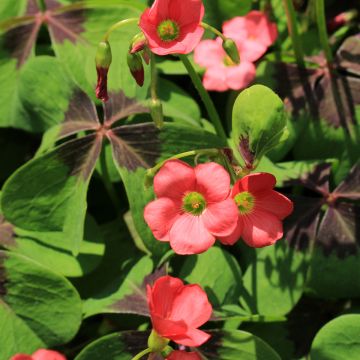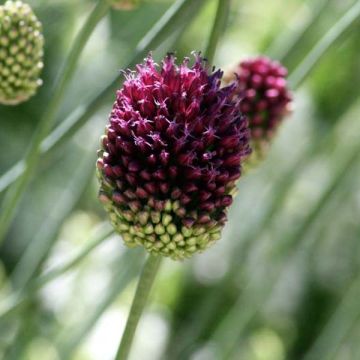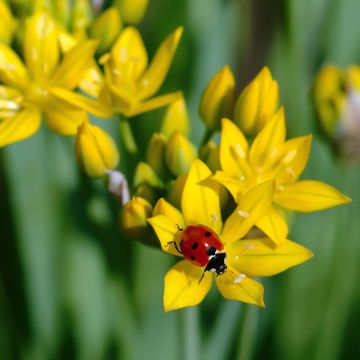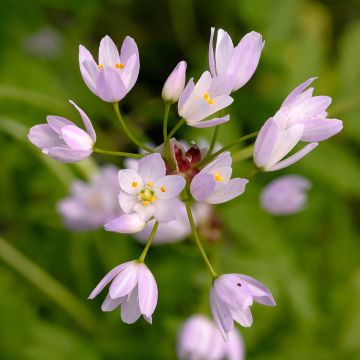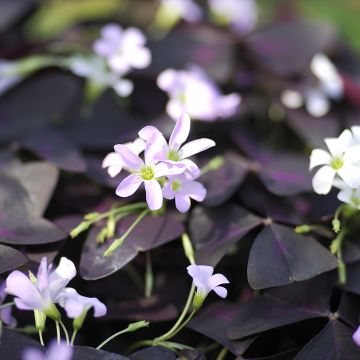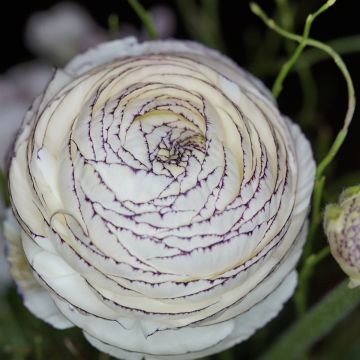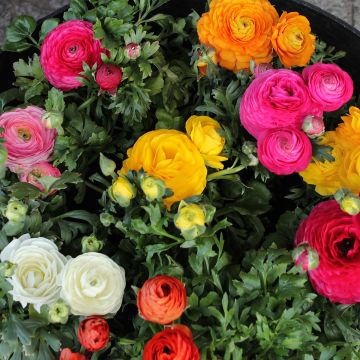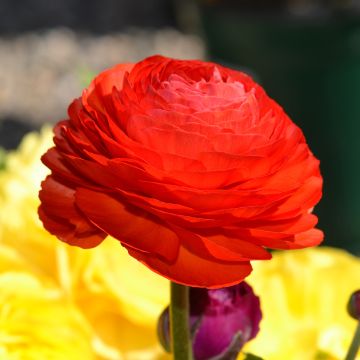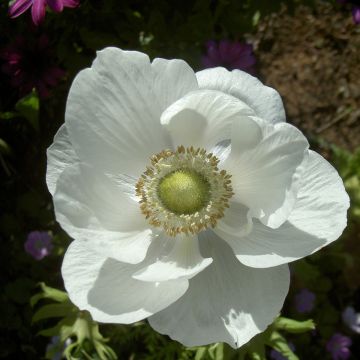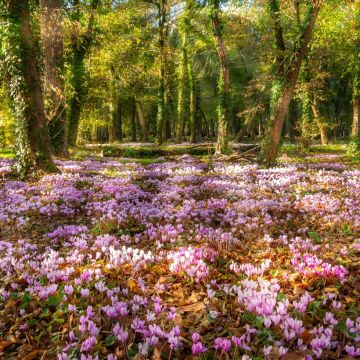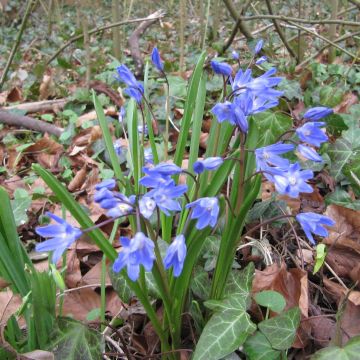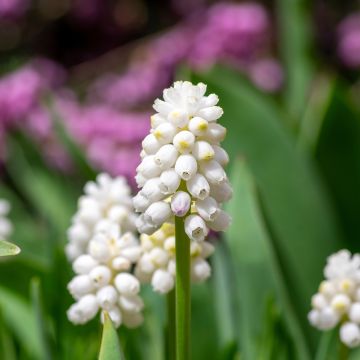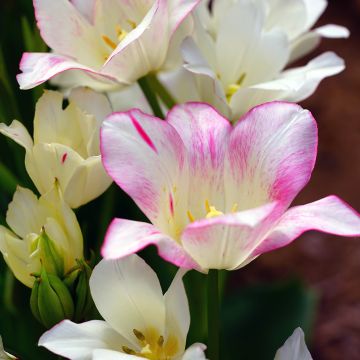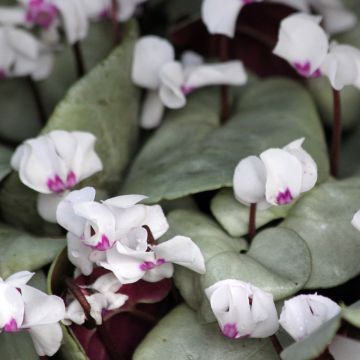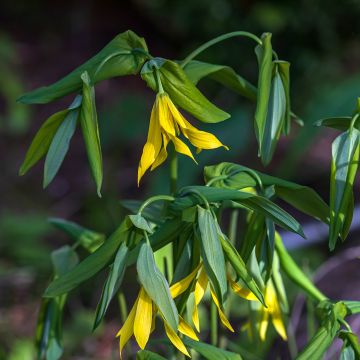

Hyacinthoides hispanica
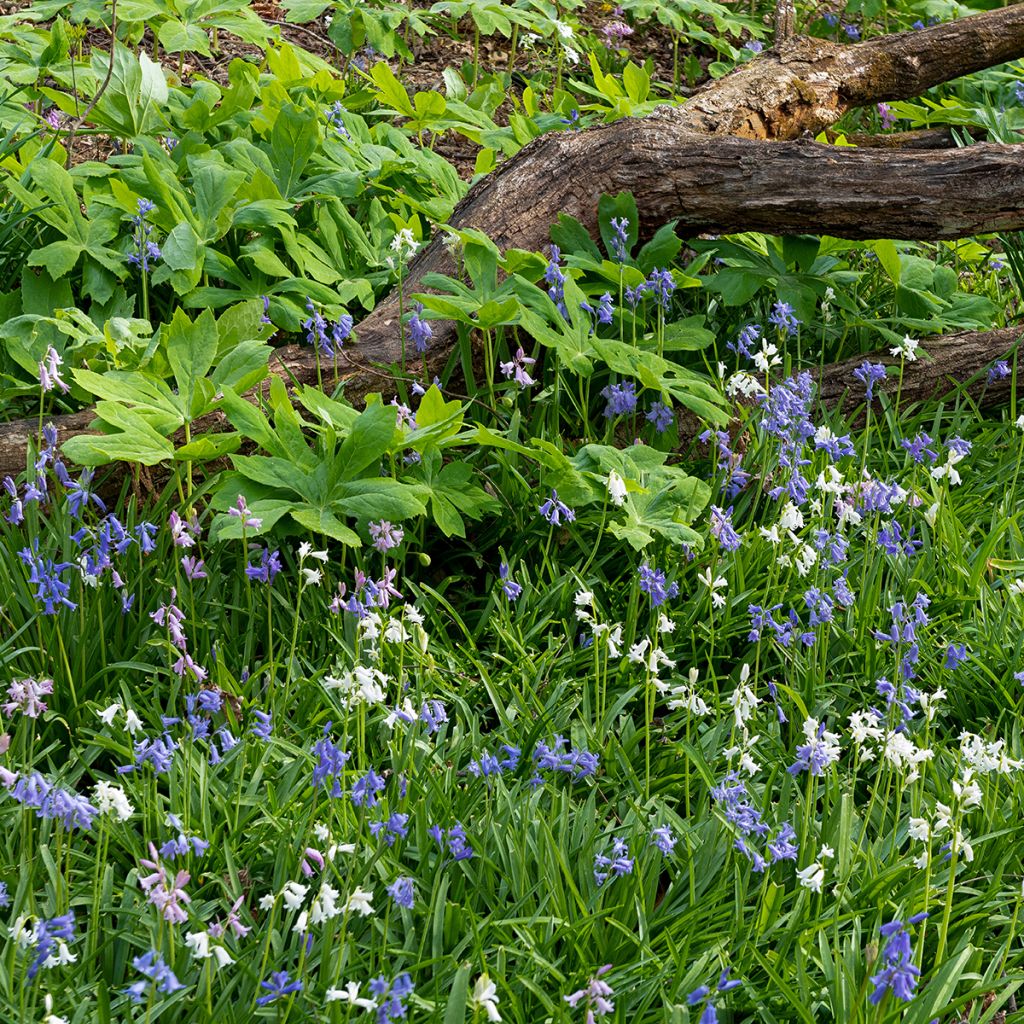

Hyacinthoides hispanica
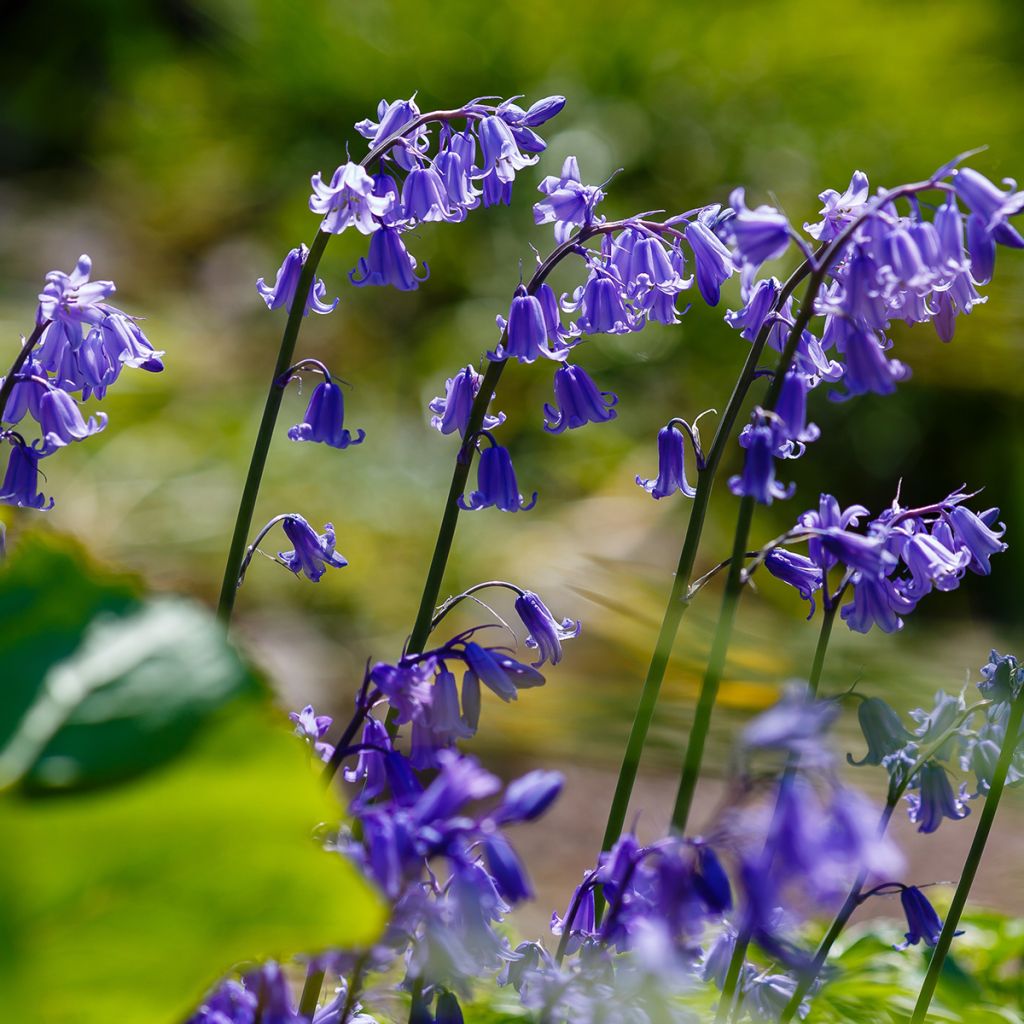

Hyacinthoides hispanica


Hyacinthoides hispanica


Hyacinthoides hispanica
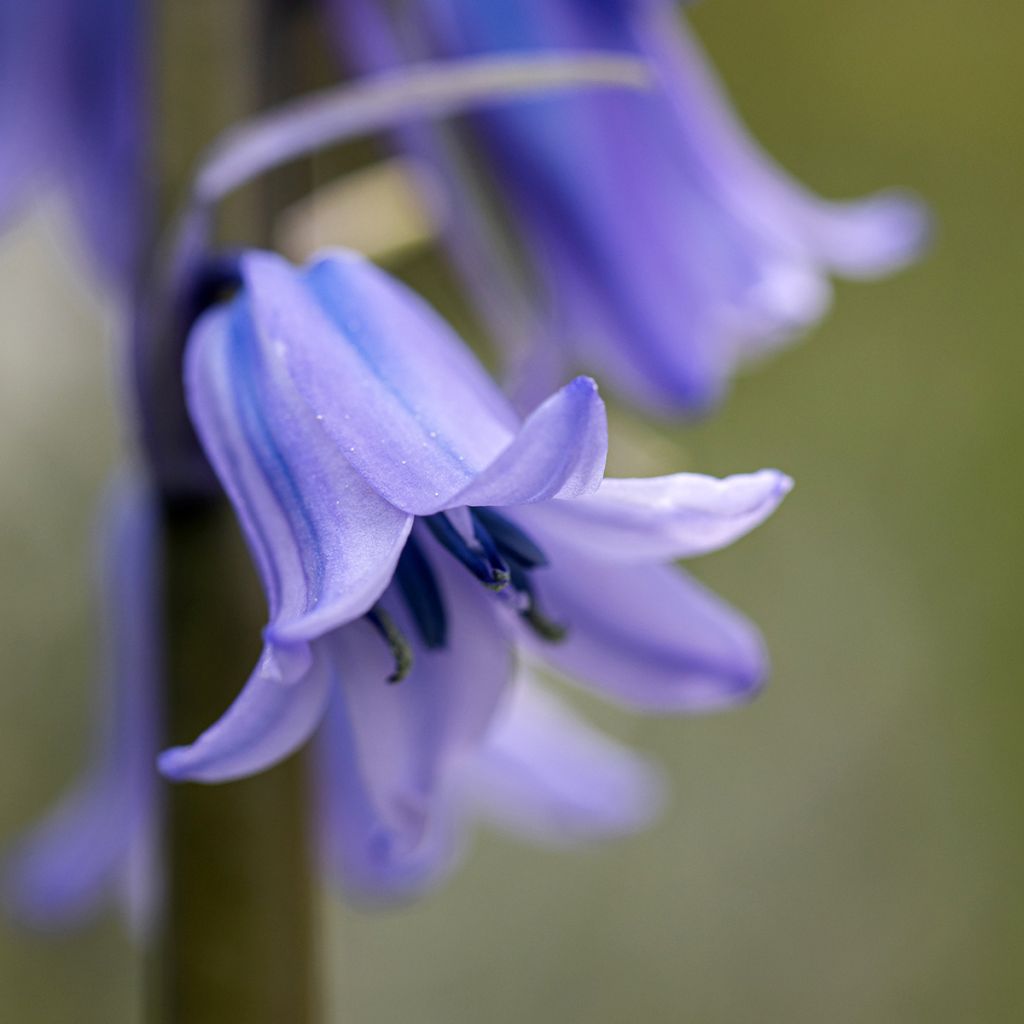

Hyacinthoides hispanica
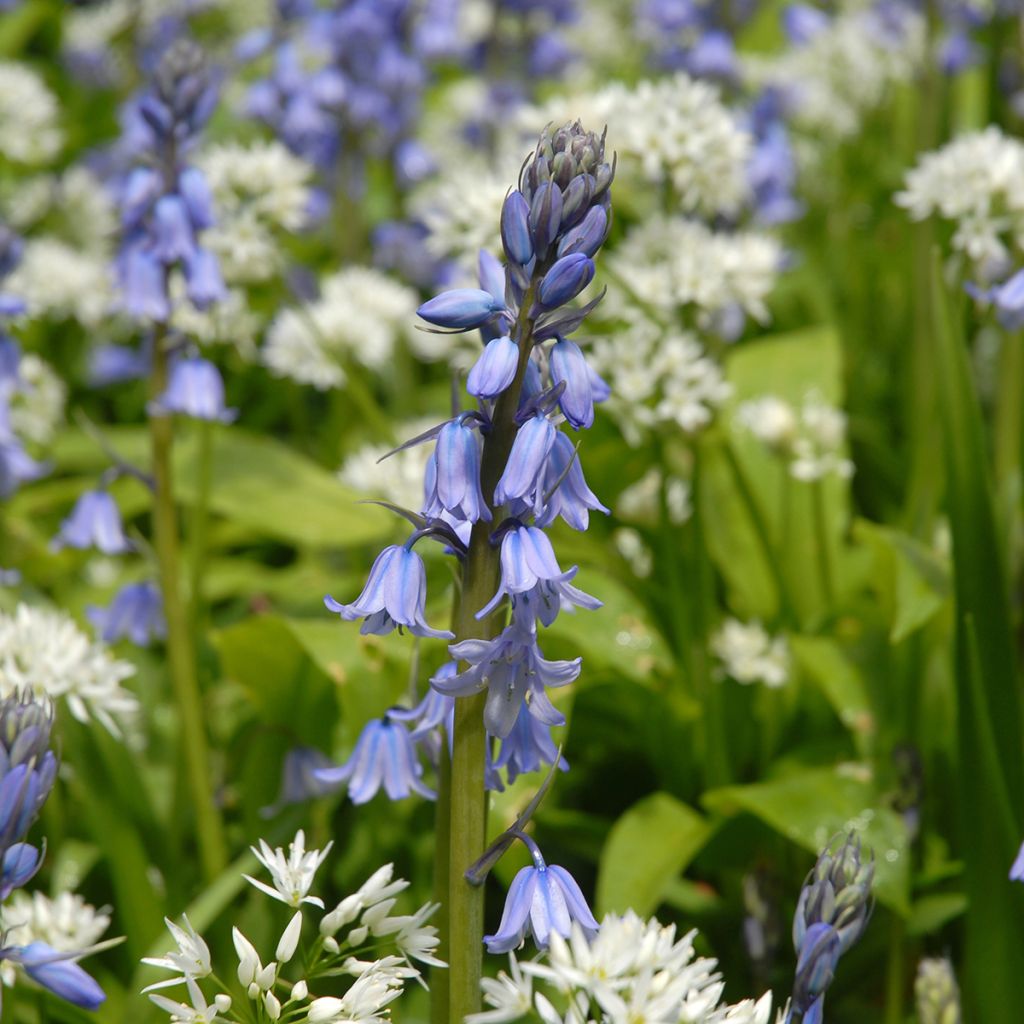

Hyacinthoides hispanica


Hyacinthoides hispanica


Hyacinthoides hispanica


Hyacinthoides hispanica
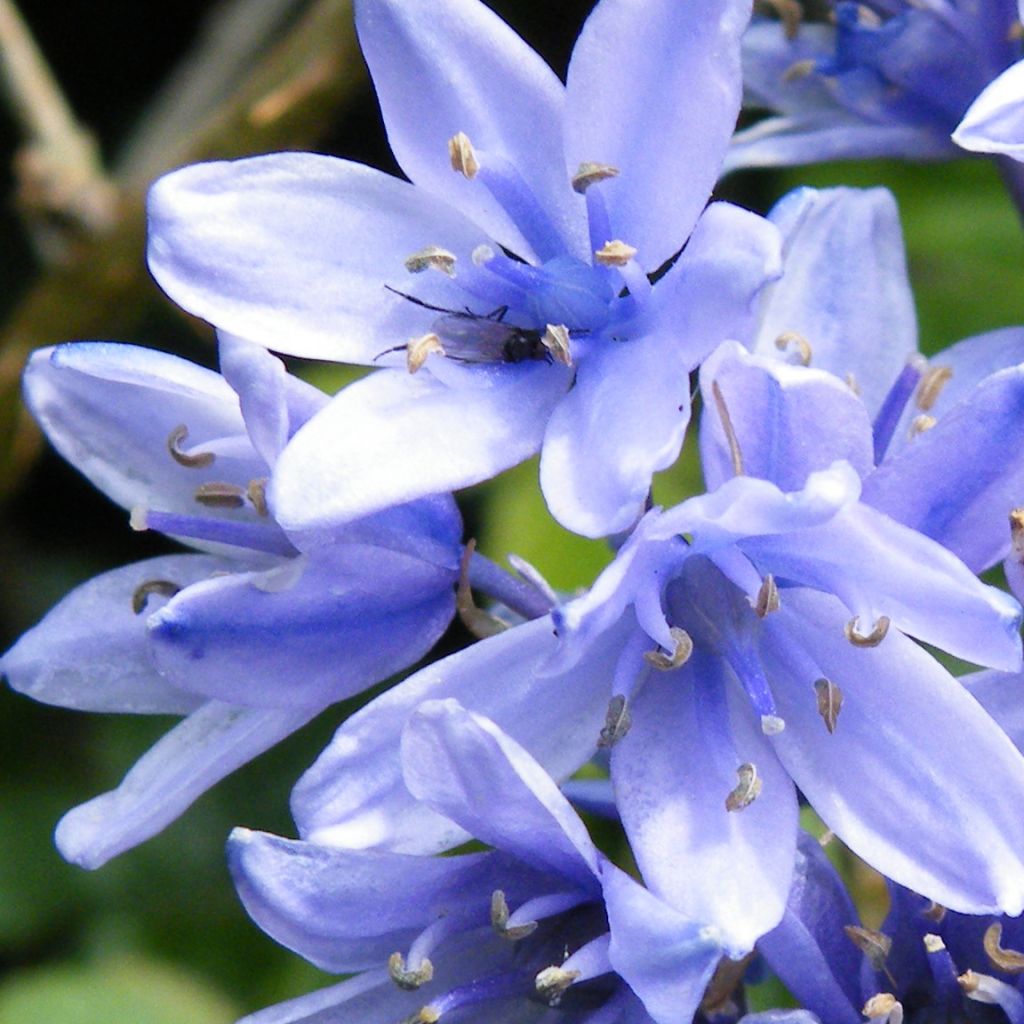

Hyacinthoides hispanica


Hyacinthoides hispanica
Hyacinthoides hispanica
Hyacinthoides hispanica
Spanish bluebell, wood hyacinth
Be careful with this extremely invasive hyacinth, I'm wondering how to get rid of it despite the beautiful blue carpet it creates in spring. It has gradually taken over the entire garden, to the detriment of other species, and its hundreds of bulbs are impossible to remove once it has settled in. I do not recommend planting it in the garden; it is better to choose the native bluebell (Hyacinthoides non-scripta) instead.
Laurence, 18/03/2024
Special offer!
Receive a €20 voucher for any order over €90 (excluding delivery costs, credit notes, and plastic-free options)!
1- Add your favorite plants to your cart.
2- Once you have reached €90, confirm your order (you can even choose the delivery date!).
3- As soon as your order is shipped, you will receive an email containing your voucher code, valid for 3 months (90 days).
Your voucher is unique and can only be used once, for any order with a minimum value of €20, excluding delivery costs.
Can be combined with other current offers, non-divisible and non-refundable.
Why not try an alternative variety in stock?
View all →This plant carries a 6 months recovery warranty
More information
We guarantee the quality of our plants for a full growing cycle, and will replace at our expense any plant that fails to recover under normal climatic and planting conditions.

Would this plant suit my garden?
Set up your Plantfit profile →
Description
The Hyacinthoides hispanica, also known as the Spanish Bluebell or Spanish Squill, is a botanical species often confused with the Common Bluebell (Hyacinthoides non-scripta), which is native to our woodlands. This hardy and tolerant wildflower originates from Spain and Portugal, and has naturalized in many countries. It is a perennial bulb that offers a charming spring flowering, with drooping bell-shaped flowers in a light blue-lilac colour and blue anthers. They emerge from a cluster of large strap-shaped leaves, displaying a beautiful fresh green and glossy colour. Give this prolific plant plenty of space as it forms large and beautifully blooming colonies in spring.
The Endymion hispanicus, another accepted name for the Spanish Bluebell, is a bulbous plant belonging to the Asparagaceae family (subfamily Hyacinthaceae), native to southwestern Europe and North Africa. Its natural habitat includes forest edges, fallow land, and deciduous woodlands (beech, oak, and chestnut), always in partial shade and in soils that remain slightly moist. It is a prolific species, widely naturalized in France, where it competes and readily hybridizes with our Common Bluebell (Hyacinthoides non-scripta), which thrives in the same environments. In some regions, it tends to outcompete it.
Anchored by a tall and narrow bulb deeply planted in the soil, the Spanish Bluebell multiplies through numerous stolons, eventually forming dense clumps of lanceolate leaves that are 20 to 50 cm (8 to 20in) long and 3 to 4 cm (1 to 2in) wide at the base, wider than those of the Common Bluebell. Flowering stems emerge from late April to June depending on the climate. They rise to 30 to 40 cm (12 to 16in) and bear clusters of 4 to 16 slightly flared bell-shaped flowers, with little to no recurvature at the tips. The flowers are distributed somewhat all around the stem, unlike those of the Common Bluebell, which are all located on the same side of the stem. The flowering is followed by the formation of globose fruits, while the leaves wither and collapse onto the ground. The seeds are lobed once all the above-ground parts have dried. Naturalizing both through its trailing rhizomes and spontaneous seedlings, the Spanish Bluebell is capable of covering the ground of an entire woodland.
The Spanish Bluebell offers the magnificent spectacle of its flowering, planted en masse in the wilder areas of the garden, where it can spread freely. It is perfect for edging a shaded pathway, lining a wall supporting a fence gate, or enhancing the ground under a cluster of deciduous bushes. It complements the fresh blue colour of broom flowers, accentuates the blooming of flowering almond and cherry trees, creating a magnificent display at little cost. It can also be paired with white, pink, or red tulips and botanical narcissus.
Report an error about the product description
Hyacinthoides hispanica in pictures




Plant habit
Flowering
Foliage
Botanical data
Hyacinthoides
hispanica
Hyacinthaceae
Spanish bluebell, wood hyacinth
Mediterranean
Other Spring bulbs A to Z
View all →Planting and care
Highly tolerant to soil conditions, the Spanish bluebell prefers well-amended soils, rich in organic matter, ideally clay-loamy and not too dry. The Hyacinthoides hispanica is planted in September-October at a depth of about 15 cm (6in). This bulbous plant tolerates full shade perfectly, but prefers partial shade where it will receive some direct sunlight. It is very easy to grow. As soon as the conditions are met, which is very often, it multiplies through its rhizomes and self-seeds spontaneously. Remove faded flower stems if you want to avoid spontaneous sowing. This plant is very sturdy and robust, with no specific enemies or diseases.
Planting period
Intended location
Care
-
, onOrder confirmed
Reply from on Promesse de fleurs
Haven't found what you were looking for?
Hardiness is the lowest winter temperature a plant can endure without suffering serious damage or even dying. However, hardiness is affected by location (a sheltered area, such as a patio), protection (winter cover) and soil type (hardiness is improved by well-drained soil).

Photo Sharing Terms & Conditions
In order to encourage gardeners to interact and share their experiences, Promesse de fleurs offers various media enabling content to be uploaded onto its Site - in particular via the ‘Photo sharing’ module.
The User agrees to refrain from:
- Posting any content that is illegal, prejudicial, insulting, racist, inciteful to hatred, revisionist, contrary to public decency, that infringes on privacy or on the privacy rights of third parties, in particular the publicity rights of persons and goods, intellectual property rights, or the right to privacy.
- Submitting content on behalf of a third party;
- Impersonate the identity of a third party and/or publish any personal information about a third party;
In general, the User undertakes to refrain from any unethical behaviour.
All Content (in particular text, comments, files, images, photos, videos, creative works, etc.), which may be subject to property or intellectual property rights, image or other private rights, shall remain the property of the User, subject to the limited rights granted by the terms of the licence granted by Promesse de fleurs as stated below. Users are at liberty to publish or not to publish such Content on the Site, notably via the ‘Photo Sharing’ facility, and accept that this Content shall be made public and freely accessible, notably on the Internet.
Users further acknowledge, undertake to have ,and guarantee that they hold all necessary rights and permissions to publish such material on the Site, in particular with regard to the legislation in force pertaining to any privacy, property, intellectual property, image, or contractual rights, or rights of any other nature. By publishing such Content on the Site, Users acknowledge accepting full liability as publishers of the Content within the meaning of the law, and grant Promesse de fleurs, free of charge, an inclusive, worldwide licence for the said Content for the entire duration of its publication, including all reproduction, representation, up/downloading, displaying, performing, transmission, and storage rights.
Users also grant permission for their name to be linked to the Content and accept that this link may not always be made available.
By engaging in posting material, Users consent to their Content becoming automatically accessible on the Internet, in particular on other sites and/or blogs and/or web pages of the Promesse de fleurs site, including in particular social pages and the Promesse de fleurs catalogue.
Users may secure the removal of entrusted content free of charge by issuing a simple request via our contact form.
The flowering period indicated on our website applies to countries and regions located in USDA zone 8 (France, the United Kingdom, Ireland, the Netherlands, etc.)
It will vary according to where you live:
- In zones 9 to 10 (Italy, Spain, Greece, etc.), flowering will occur about 2 to 4 weeks earlier.
- In zones 6 to 7 (Germany, Poland, Slovenia, and lower mountainous regions), flowering will be delayed by 2 to 3 weeks.
- In zone 5 (Central Europe, Scandinavia), blooming will be delayed by 3 to 5 weeks.
In temperate climates, pruning of spring-flowering shrubs (forsythia, spireas, etc.) should be done just after flowering.
Pruning of summer-flowering shrubs (Indian Lilac, Perovskia, etc.) can be done in winter or spring.
In cold regions as well as with frost-sensitive plants, avoid pruning too early when severe frosts may still occur.
The planting period indicated on our website applies to countries and regions located in USDA zone 8 (France, United Kingdom, Ireland, Netherlands).
It will vary according to where you live:
- In Mediterranean zones (Marseille, Madrid, Milan, etc.), autumn and winter are the best planting periods.
- In continental zones (Strasbourg, Munich, Vienna, etc.), delay planting by 2 to 3 weeks in spring and bring it forward by 2 to 4 weeks in autumn.
- In mountainous regions (the Alps, Pyrenees, Carpathians, etc.), it is best to plant in late spring (May-June) or late summer (August-September).
The harvesting period indicated on our website applies to countries and regions in USDA zone 8 (France, England, Ireland, the Netherlands).
In colder areas (Scandinavia, Poland, Austria...) fruit and vegetable harvests are likely to be delayed by 3-4 weeks.
In warmer areas (Italy, Spain, Greece, etc.), harvesting will probably take place earlier, depending on weather conditions.
The sowing periods indicated on our website apply to countries and regions within USDA Zone 8 (France, UK, Ireland, Netherlands).
In colder areas (Scandinavia, Poland, Austria...), delay any outdoor sowing by 3-4 weeks, or sow under glass.
In warmer climes (Italy, Spain, Greece, etc.), bring outdoor sowing forward by a few weeks.































